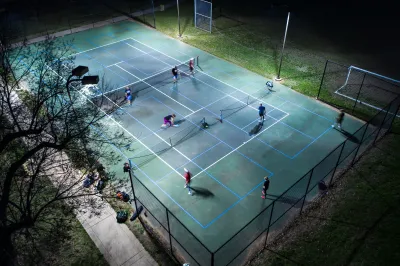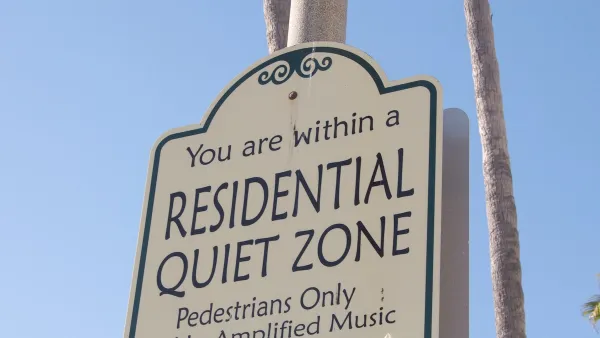Pickleball may be America's fastest growing sport, but it is not universally loved because of the noise it causes. Learn one expert's ideas for mitigating the noise impacts.

Pickleball, a racquet-based sport that combines elements of tennis, badminton and ping-pong, is one of the fastest-growing sports in the United States. It can be played indoors or outdoors, and the courts and nets are smaller than their tennis counterparts. Using a paddle and a plastic ball with holes, the sport can be played either as a singles or a doubles game. Pickleball first found popularity among active adults and retirees as a less physically demanding alternative to tennis, but today the sport is enjoyed by all ages and skill levels.
While playing pickleball offers health and other benefits, it also has impacts that need to be considered and mitigated. The major negative impact associated with pickleball is noise. When the hard surface of the pickleball racket connects with the hard surface of the ball, sound waves vibrate rapidly, registering a decibel level of around 70 dBA at 100 feet from the court. (In comparison, tennis noise is closer to 40 dBA.)
This article by Mark Dent features Bob Unetich, a retired engineer, university professor, and founder of Pickleball Sound Mitigation LLC. He has become a go-to source for information in the pickleball wars, studying everything from paddles to the placement of courts. When Unetich has discussions with clients, he gives a primary piece of advice: Do whatever you can to ensure that the average sound emanating from the court to the nearest homes is 50 dBA or less.
According to Unetich's studies and experience, residents of suburban areas generally do not complain about that noise level, which is a few decibels above typical suburban background noise. In noisier city environments, Unetich has proposed a maximum noise limit of 3 dBA above the background sound. Getting down to 50 dBA is possible with planning. Data from one of Unetich’s papers estimates that even in a wide-open space the sound of pickleball will likely be tolerable to people living at a distance of 977 feet or farther from a court, and anecdotally he has rarely heard complaints from people living more than roughly 500 feet away.
For more information, please read the source article.
FULL STORY: One man’s quest to make pickleball quiet

National Parks Layoffs Will Cause Communities to Lose Billions
Thousands of essential park workers were laid off this week, just before the busy spring break season.

Retro-silient?: America’s First “Eco-burb,” The Woodlands Turns 50
A master-planned community north of Houston offers lessons on green infrastructure and resilient design, but falls short of its founder’s lofty affordability and walkability goals.

Delivering for America Plan Will Downgrade Mail Service in at Least 49.5 Percent of Zip Codes
Republican and Democrat lawmakers criticize the plan for its disproportionate negative impact on rural communities.

Test News Post 1
This is a summary

Test News Headline 46
Test for the image on the front page.

Balancing Bombs and Butterflies: How the National Guard Protects a Rare Species
The National Guard at Fort Indiantown Gap uses GIS technology and land management strategies to balance military training with conservation efforts, ensuring the survival of the rare eastern regal fritillary butterfly.
Urban Design for Planners 1: Software Tools
This six-course series explores essential urban design concepts using open source software and equips planners with the tools they need to participate fully in the urban design process.
Planning for Universal Design
Learn the tools for implementing Universal Design in planning regulations.
EMC Planning Group, Inc.
Planetizen
Planetizen
Mpact (formerly Rail~Volution)
Great Falls Development Authority, Inc.
HUDs Office of Policy Development and Research
NYU Wagner Graduate School of Public Service





























